Best Premier League players EVER: 100 greatest footballers in England's top flight since 1992
The best Premier League players ever, as we rank the ultimate icons who defined over three decades of thrills and spills
10. Paul Scholes
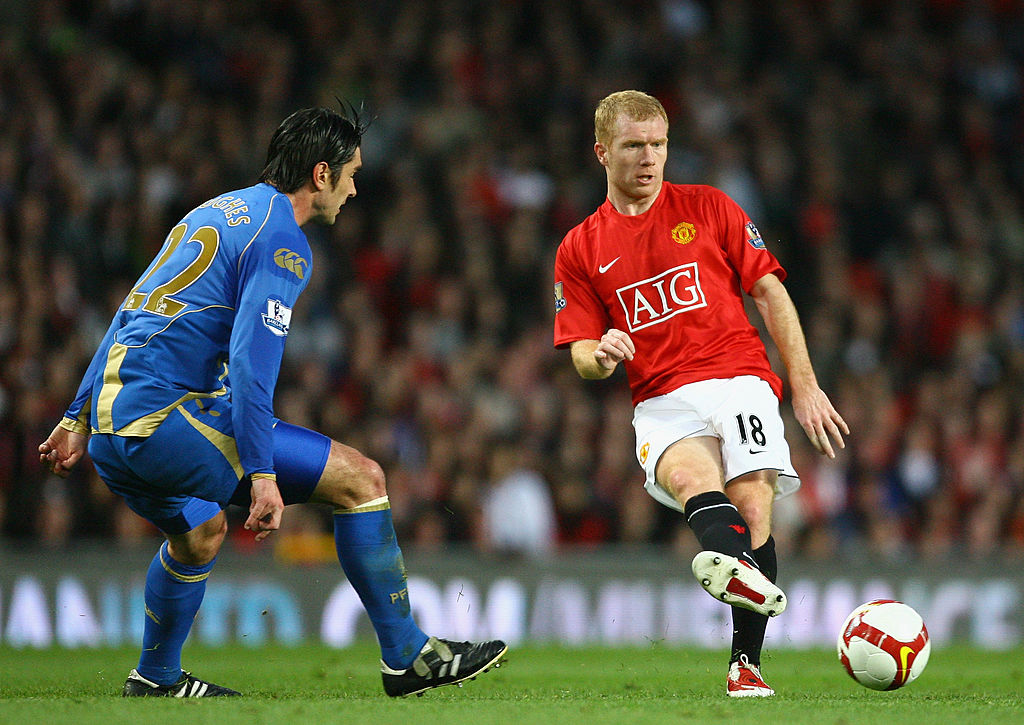
Manchester United
Thierry Henry names him as the one player he wishes he could have played alongside – as did Pep Guardiola. Barcelona legend Xavi claims Scholes would have been rated even higher had he been Spanish. Andrea Pirlo calls the Class of ’92 graduate the “truly great English midfielder of his generation”. Zinedine Zidane, one of the game’s legends, cites not playing with Scholes as the biggest regret of his playing career. You get it. Scholes was a real players’ player.
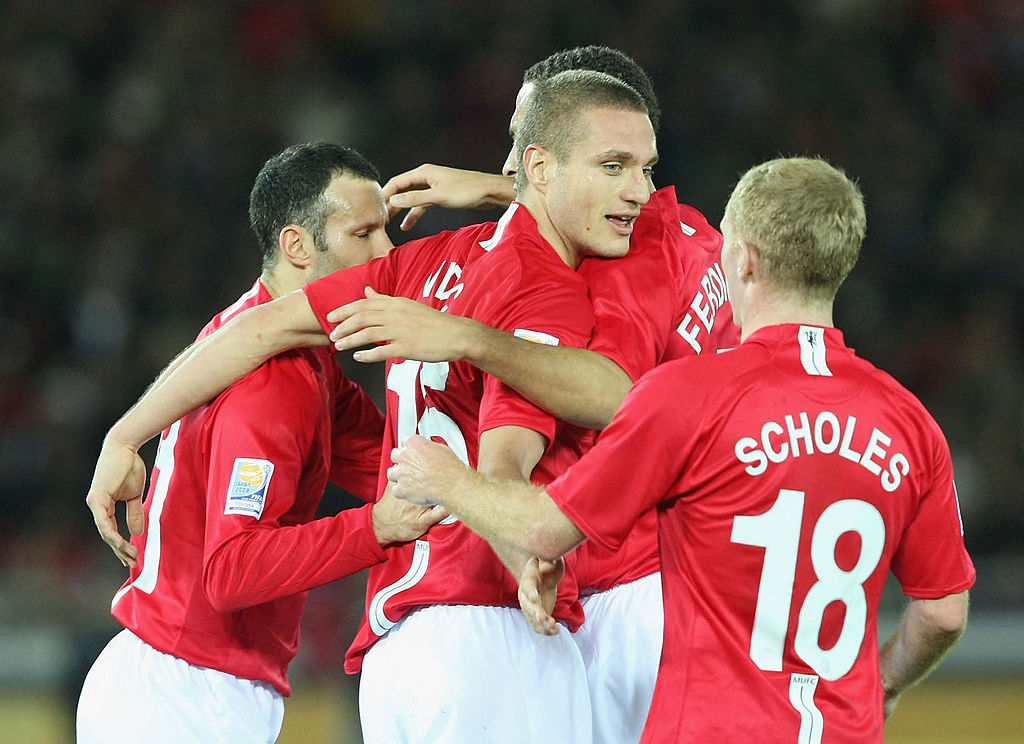
Liverpool and Chelsea supporters will say he was shoved over on the left for England because Gerrard and Lampard were better. Sven-Goran Eriksson will say it was because he was the only one of the three who could adapt to the positional change. His England team-mates plundered more goals, yes, but remove Gerrard’s 32 Premier League penalties and his tally (88) drops well below Scholes’ 106. Remove Lampard’s 43 spot-kicks and his goal average moves in line with the United man’s.
Arsenal supporters will bring Patrick Vieira into the debate. The Frenchman was indeed phenomenal for the Gunners, but even he concedes that Scholes was the player “who could do everything”.
The only answer is Scholes… and we haven’t even mentioned his trophies.
9. Patrick Vieira
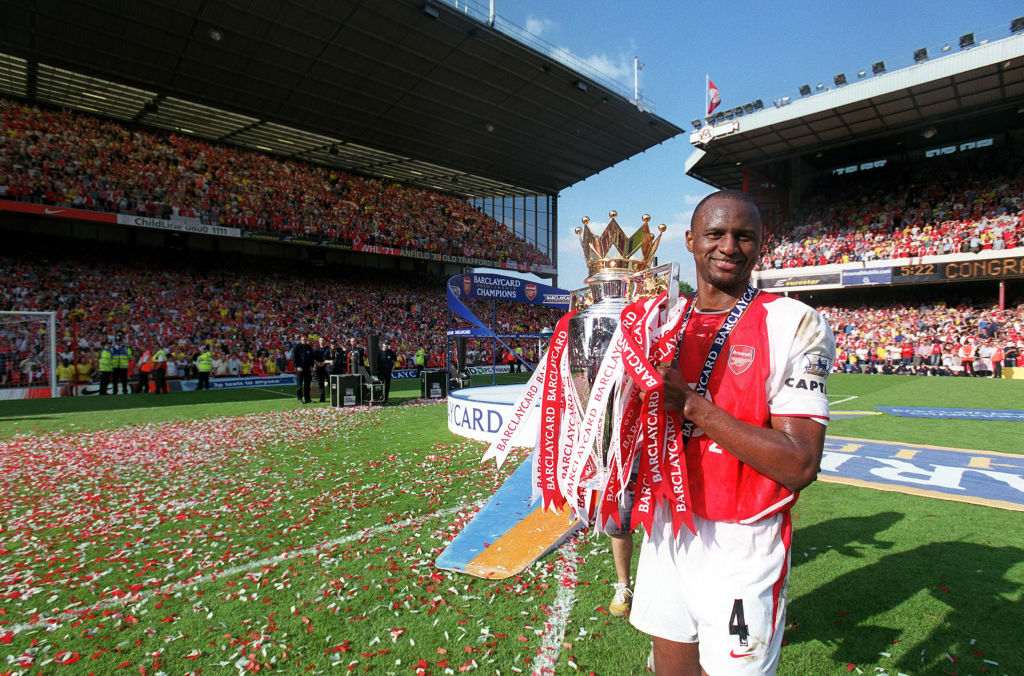
Arsenal, Manchester City
Tim Stillman of Arseblog tells FFT all about why Super Pat was so integral to Arsene Wenger’s greatest sides…
The best features, fun and footballing quizzes, straight to your inbox every week.
Although Thierry Henry’s name rebounded from the North Bank so often, it was Vieira who drew the real choral affection of Arsenal’s crowd. The towering skipper’s song, to the tune of Italian Eurovision ditty Nel Blu, Dipinto Di Blu (Volare), was top of the Highbury hit parade.
Supporters recognised Vieira as the symbol of one of the Gunners’ greatest ever teams. The midfield icon once described himself as having “French feet and an African heart” – exactly what he gave Arsene Wenger’s side.
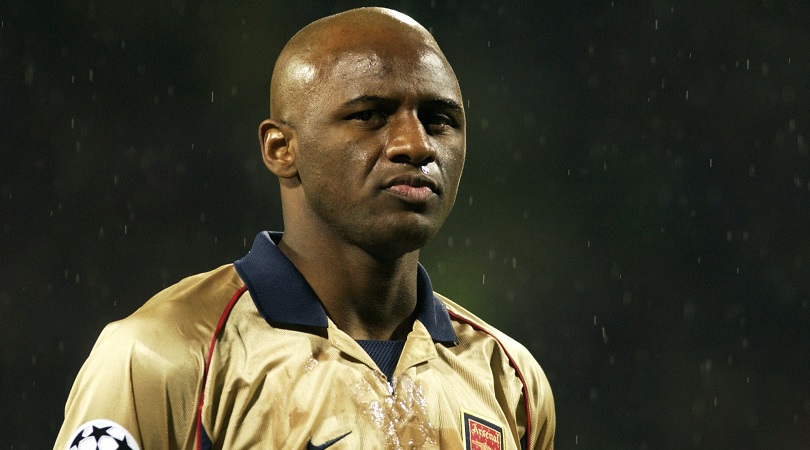
Vieira was a warrior who had the feet of a ballerina. His countless disputes with Roy Keane and “occasional” fits of temper had him portrayed as a hard man; the enforcer around whom Arsenal’s team of sprinters and talented dancers orbited. However, to remember him that way is to unfairly reduce his repertoire of skills.
Vieira had a silken touch, his feet as soft as pillows as he cradled the ball on the end of his boot shortly after chapeau-ing another hapless opponent. He could slalom past you or just bulldoze beyond you: ultimately, the painful choice was yours.
There’s a good reason why new midfield starlets are still labelled ‘the new Vieira’ after all these years. The truth is, there hasn’t been a player with his blend of qualities since – at Arsenal, nor any other team. Vieira was, and continues to be, unique.
8. Frank Lampard
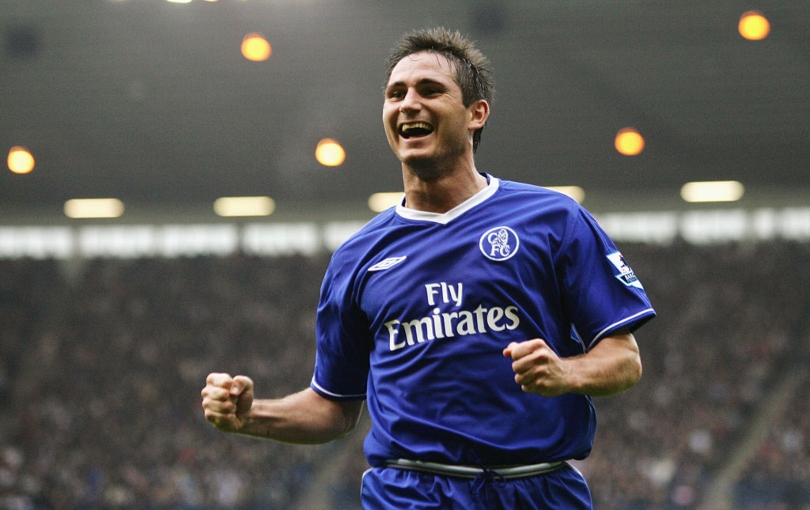
West Ham United, Chelsea, Manchester City
Garry Hayes on what Frank Lampard means to the Premier League
Roman Abramovich’s arrival at Chelsea in 2003 changed English football. The inflated wages and transfer fees have reshaped the landscape of the Premier League ever since.
For all the Russian billionaire shook things up, Lampard did the same for his position in midfield. We can get lost in the conversation about Vieira, Scholes and Gerrard’s individual brilliance, but what did they truly accomplish outside of winning silverware? Lampard’s legacy, after those trophies won and 177 Premier League goals, was to alter what we’ve come to expect from a raiding central midfielder. These players are treated like strikers now.
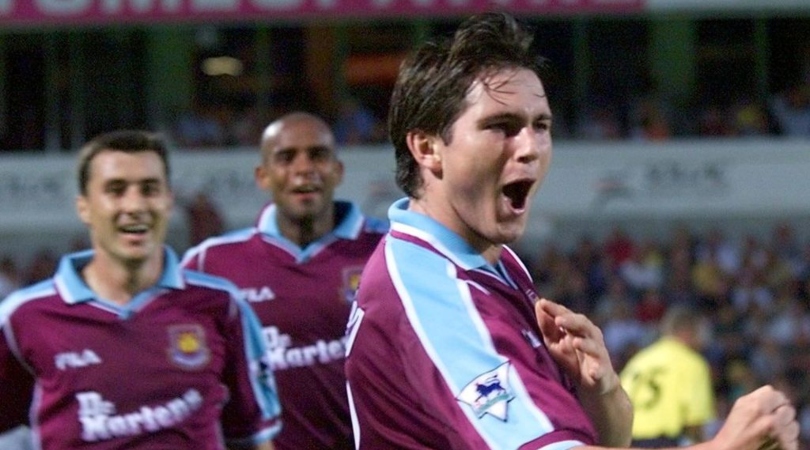
It’s not enough to do ‘the things we don’t see’. Fans, pundits and – most importantly – managers, expect their No.8 to fire home in the high teens each season. End product isn’t desired – it’s demanded.
While Vieira was inspiring an exodus from Arsenal, and Scholes and Gerrard were both playing catch-up to Chelsea, Lampard was setting the agenda. It’s why people speak of Diego Maradona in such glowing terms. He may not have won all of Lionel Messi’s trophies, but without him there wouldn’t be a Messi. That’s right, I did just compare Lampard to Maradona: because without Lampard, the role of a midfielder in 2021 would be very different.
So, Vieira, Scholes, Gerrard or Lampard? It’s not even a debate.
7. Steven Gerrard
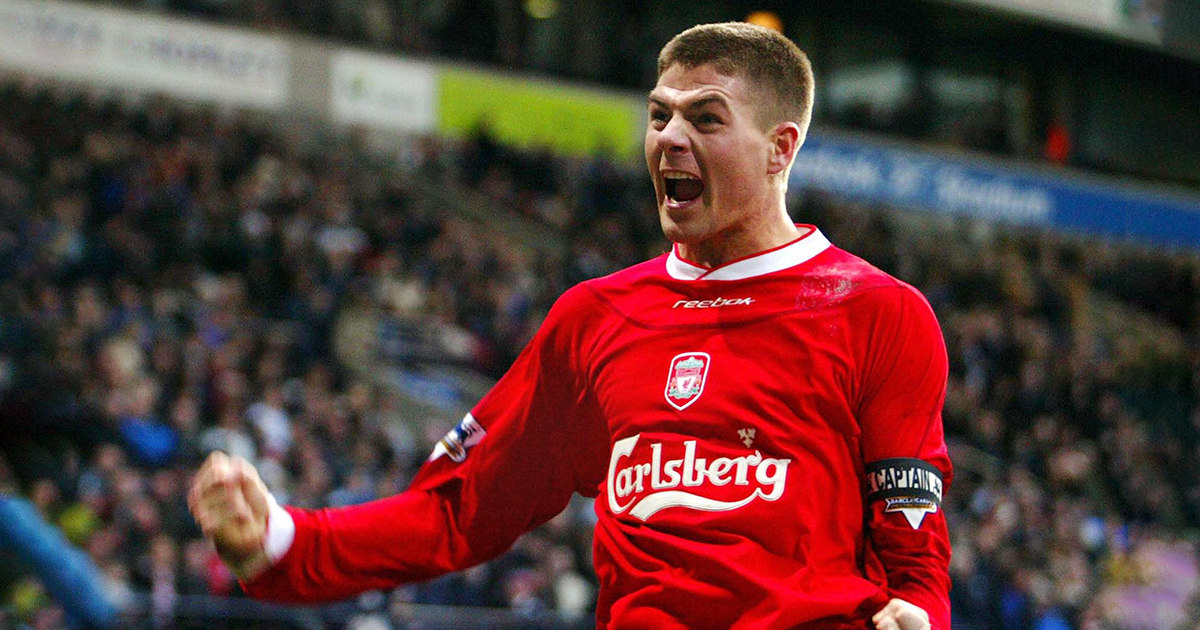
Liverpool
Author Tony Evans on a Scouse colossus, remembered as a hero for as long as football is played…
Of Liverpool’s many legends, he stands out for his composure in a crisis. When the clock was ticking down and there was one final opportunity to save the day, he was the man you wanted with the ball at his feet. Gerrard soaked up responsibility. He could play in any position, too. If you were building a prototype Premier League player of the late-90s, they would have looked like the Liverpool captain. He was strong, quick and had a remarkable passing range. His technique was majestic, and all the more impressive because he did everything slightly quicker than everyone else on the pitch.
The turning point for Gerrard came in the summer of 2005, starting with what seemed like a stunning act of betrayal just six weeks after lifting the Champions League trophy. He agreed to join Jose Mourinho’s Chelsea but, over an emotionally draining sleepless night of panic attacks, realised he couldn’t walk away from his boyhood club. It was a painful time, but the reaffirmation of his relationship with Liverpool began a process that swept away any doubters. He would have won more medals at Chelsea, but instead became an icon for a city that cherishes football above almost everything else.

There were disappointments, though. He should have been part of a team that broke the title drought long before Jurgen Klopp’s side achieved the feat last year. In 2008-09, with Gerrard playing in an adventurous role behind Fernando Torres, Liverpool finished second to a Manchester United side they had routed 4-1 at Old Trafford. Five years on, with a Premier League winner’s medal almost in his grasp, Gerrard slipped against Chelsea – in that moment, the league was gone. The incident may haunt him, but it shouldn’t: that failure in 2014 was one of tactics rather than individual errors. Poor management cost the Reds that title, not the stumble.
In turn, the Kop agonised for the captain; a man they knew personified the crowd. His greatness goes beyond his ability, even if he was the most talented English player of his generation. He symbolised Liverpool, the club and the city.
6. Eric Cantona
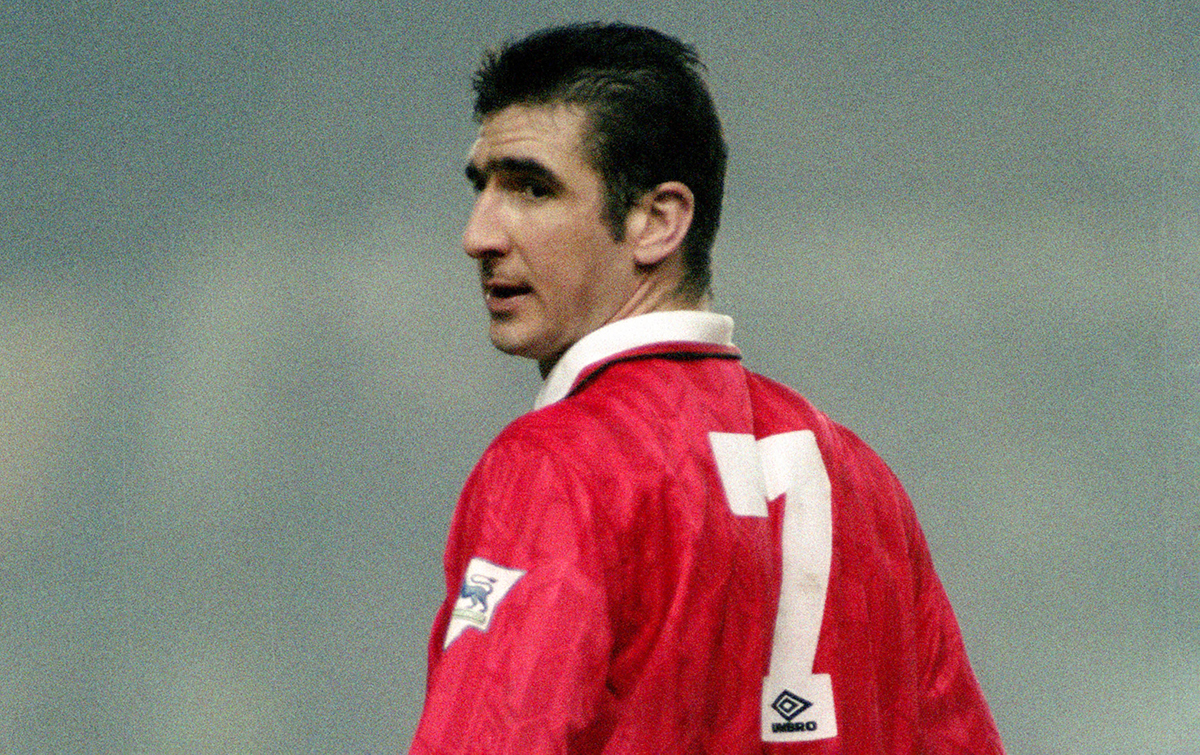
Leeds United, Manchester United
If we're talking about pure impact, Eric Cantona would have this wrapped up before we started. The Frenchman's transfer from Leeds to Manchester United in June 1992 heralded two things: the dawn of the new Premier League era and the start of a period of unprecedented success for the Red Devils.
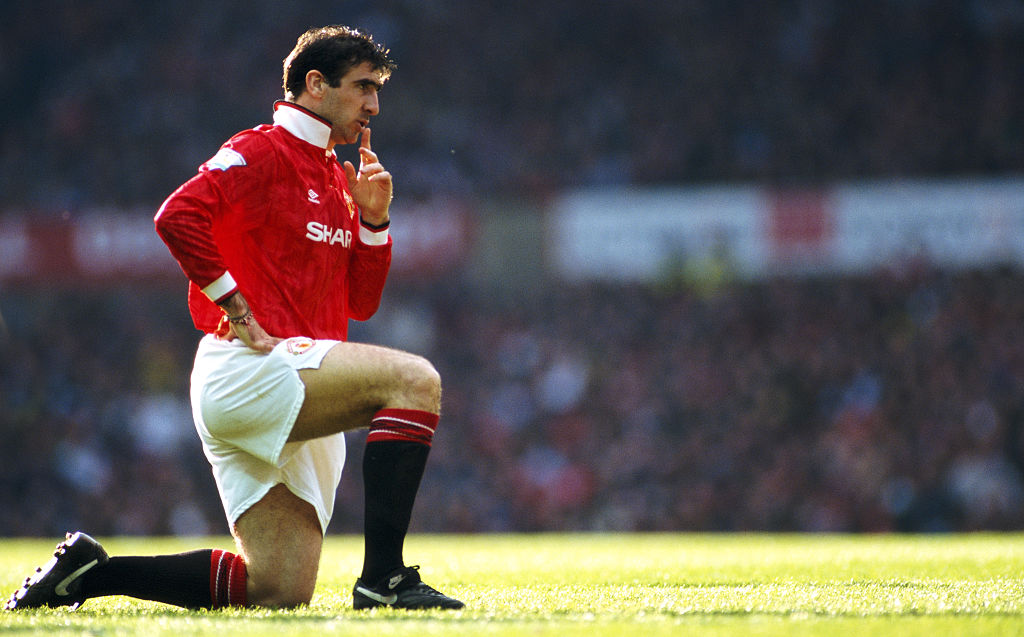
Cantona was the genius behind the club's first title under Ferguson, and three subsequent league triumphs, providing a youthful yet talented team with a genuine world-class focal point.
Collar popped, chest out, Cantona relished centre-stage, dragging United over the line and achieving god-like status among United fans. The first true megastar of the Premier League era.
5. Ryan Giggs
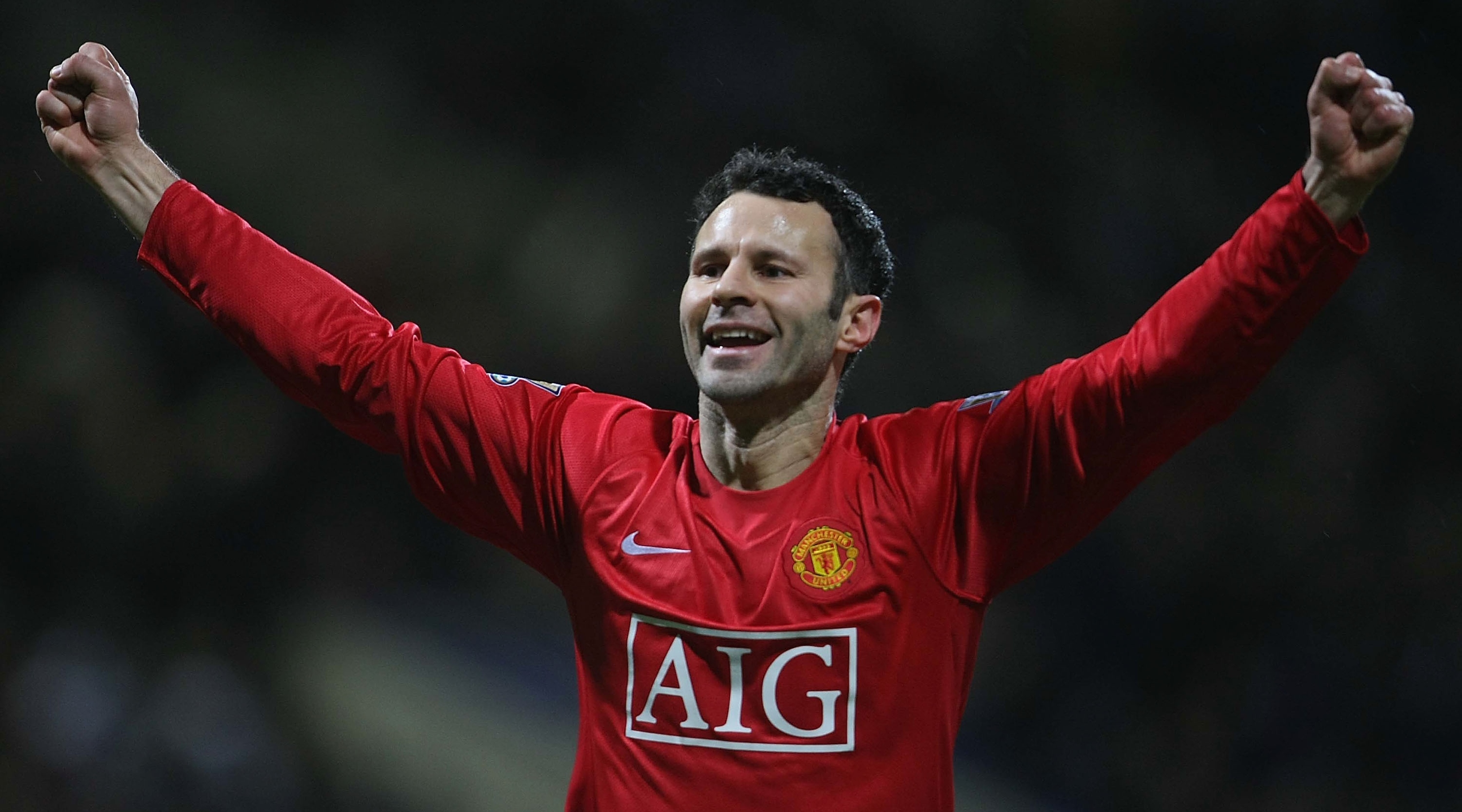
Manchester United
“I remember the first time I ever saw him,” recalled Alex Ferguson of Giggs in his 2013 autobiography. “He was 13 years old, and just floated over the ground like a cocker spaniel chasing a piece of silver paper in the wind.”
The Scot gave a 17-year-old Giggs his debut in March 1991, the Welshman becoming a regular the following season and repaying his manager’s faith with back-to-back PFA Young Player of the Year campaigns. The pin-up boy’s searing pace and dribbling paved the way for Fergie’s other fledglings to make their debuts over the following years – he showed the Class of ’92 what was possible.
Giggs might be a contender for the greatest Manchester United player of all time – the midfielder racked up 963 appearances for the Red Devils, more than anyone else. He wasn’t just a solid squad player, but consistently ace for the world’s biggest club over two decades. Others may have had marginally more impact, but Giggs tore them apart. Again and again.
4. Wayne Rooney
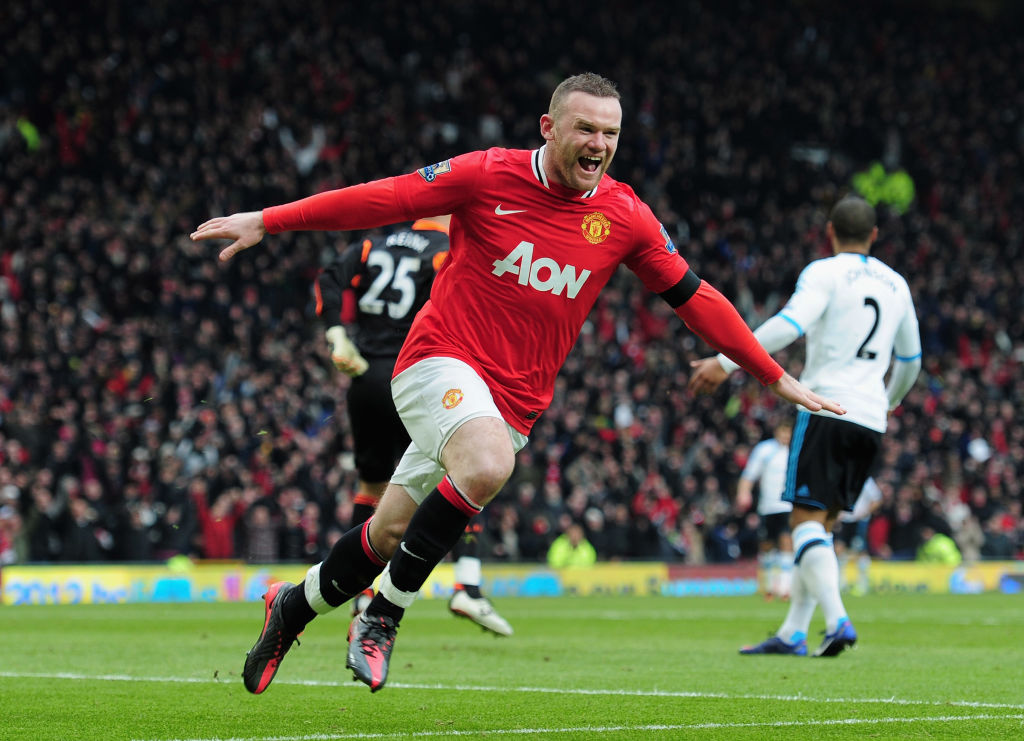
Everton, Manchester United
Few players have made their English football entrance in more barnstorming fashion. Rooney’s thunderous winner for Everton against Arsenal in 2002, aged 16, announced his arrival as an exceptional Premier League talent; later, his Manchester United debut featured a hat-trick in the Champions League.
A boy who lived for the big stage, the ‘assassin-faced baby’ was a thrilling firebrand who feared nothing and nobody, but only added to his game as years passed by. He replaced Ruud van Nistelrooy as a superior all-round striker to help United continue their dominance in the face of new Premier League forces.
That Rooney became the Premier League’s second-top goalscorer with 208 strikes is notable. Arguably more so, though, is the fact that he’s also its third-highest assister. Versatile and unselfish, England’s record marksman was particularly monstrous from 2009-11 for United, when he stepped up after Cristiano Ronaldo’s move to Real Madrid. A special player taking great responsibility.
3. Alan Shearer
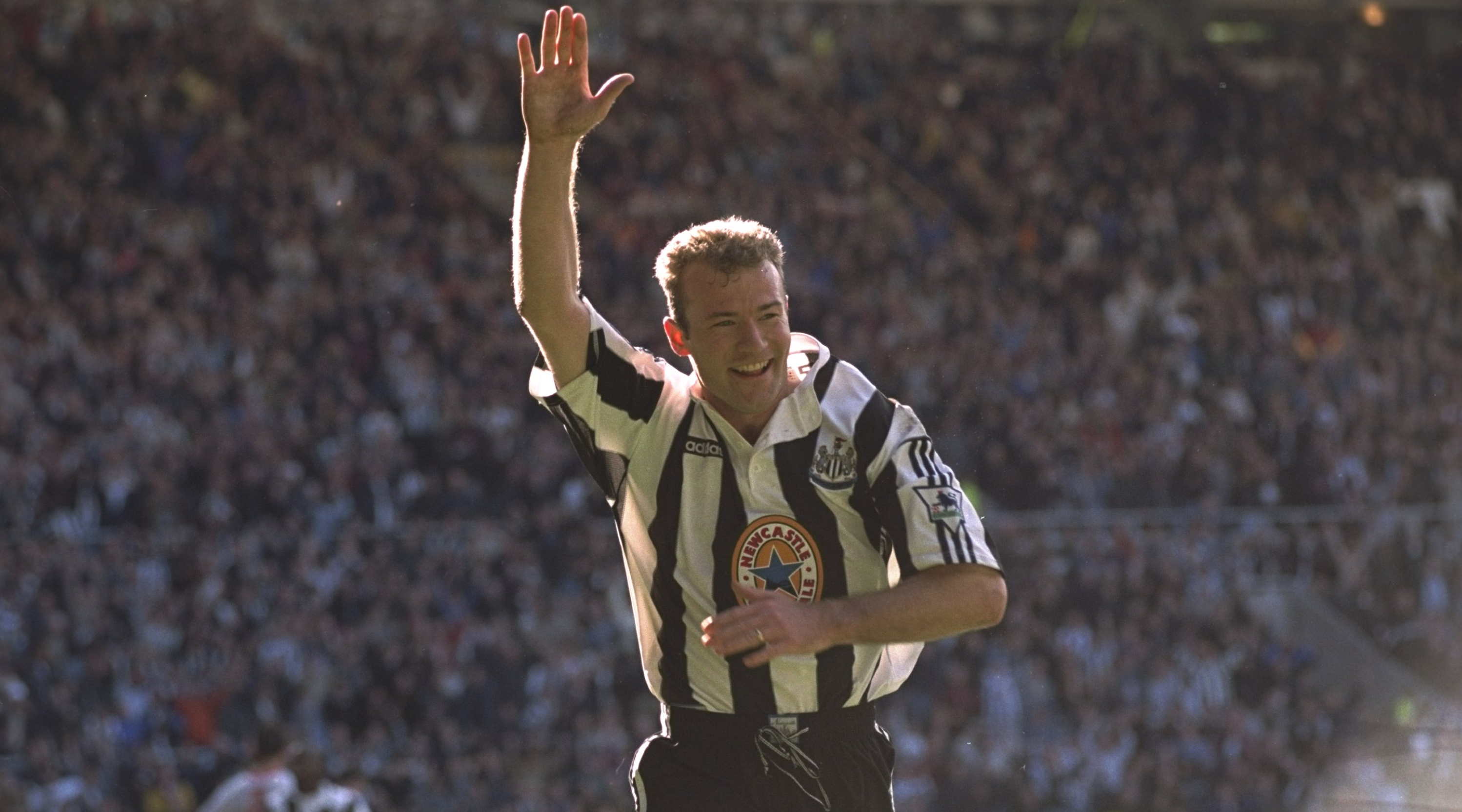
Blackburn Rovers, Newcastle United
Shearer retired with 283 league goals – and one celebration. Rich Jolly explains what made the all-time Premier League top scorer quite so unique…
Shearer’s relentlessness and ruthlessness brought him accolades. He’s still by far the fastest to a Premier League century (in 124 games, 17 fewer than anyone else); still the only Englishman to scoop the Golden Boot three years in a row; still alone in scoring 30 in three consecutive campaigns; still alone in hitting 20 in seven Premier League seasons.
He plundered 31 for a Blackburn team that came seventh and 23 for a Newcastle outfit that finished in the bottom half of the table. He smashed five goals in a fixture when the Magpies started the day in 19th place. No one else with a ton of Premier League goals for one team comes close to his ratio of 0.81 per game for Blackburn.
Throw in his 64 assists, and no one else has been involved in 324 Premier League goals.
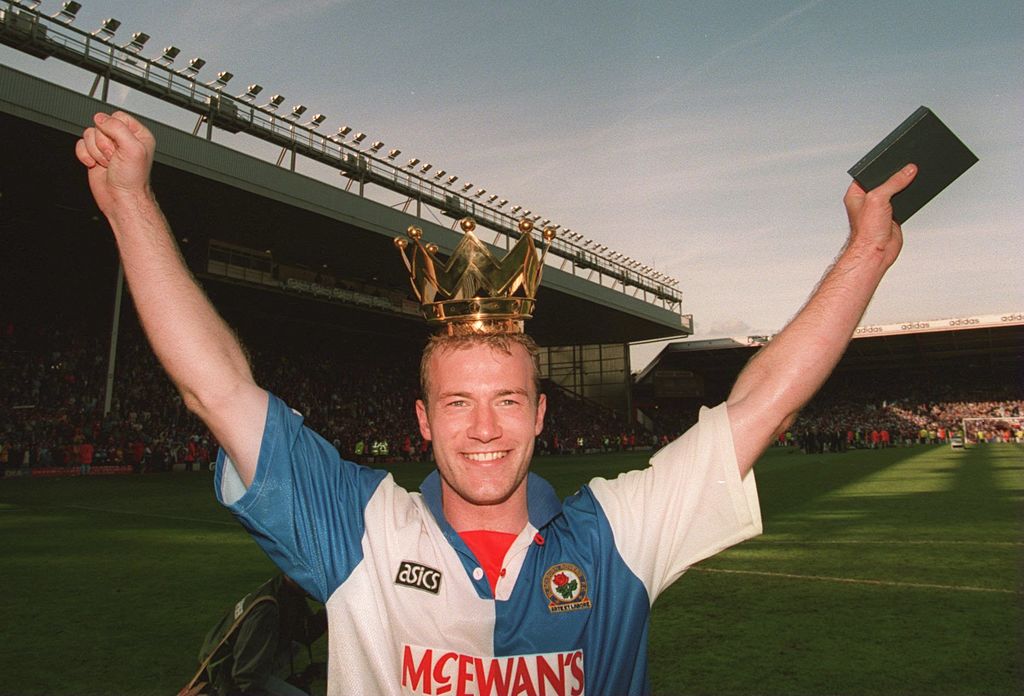
Two factors make the bare statistics even more remarkable. Two cruciate ligament injuries forced him to evolve from an eager channel-runner who liked playing alongside a targetman, to the physical focal point who, aided by Sir Bobby Robson’s advice, remained potent. Second: he turned down Manchester United in 1996 for the siren call of his native Tyneside. With the Red Devils’ supply line, his 260 efforts might have surpassed 300.
Instead, after leading Blackburn to a first top-flight title in 81 years, he endured five lower-half finishes with his hometown club. Yet, as Kenny Dalglish – his manager at both Blackburn and Newcastle – informed Shearer inelegantly last year, “It didn’t matter who you played for, you always battered them in.”
Brute force was often allied with finesse. Shearer’s favourite goal, his cannonball volley against Everton in 2002, is a case in point. He was a wonderfully clean striker of the ball, but was also brilliant in the air: only Peter Crouch has notched more Premier League headers, and he has a seven-inch height advantage. Only Jimmy Greaves, Steve Bloomer, Dixie Dean and Gordon Hodgson have struck more goals in England’s top flight.
2. Cristiano Ronaldo
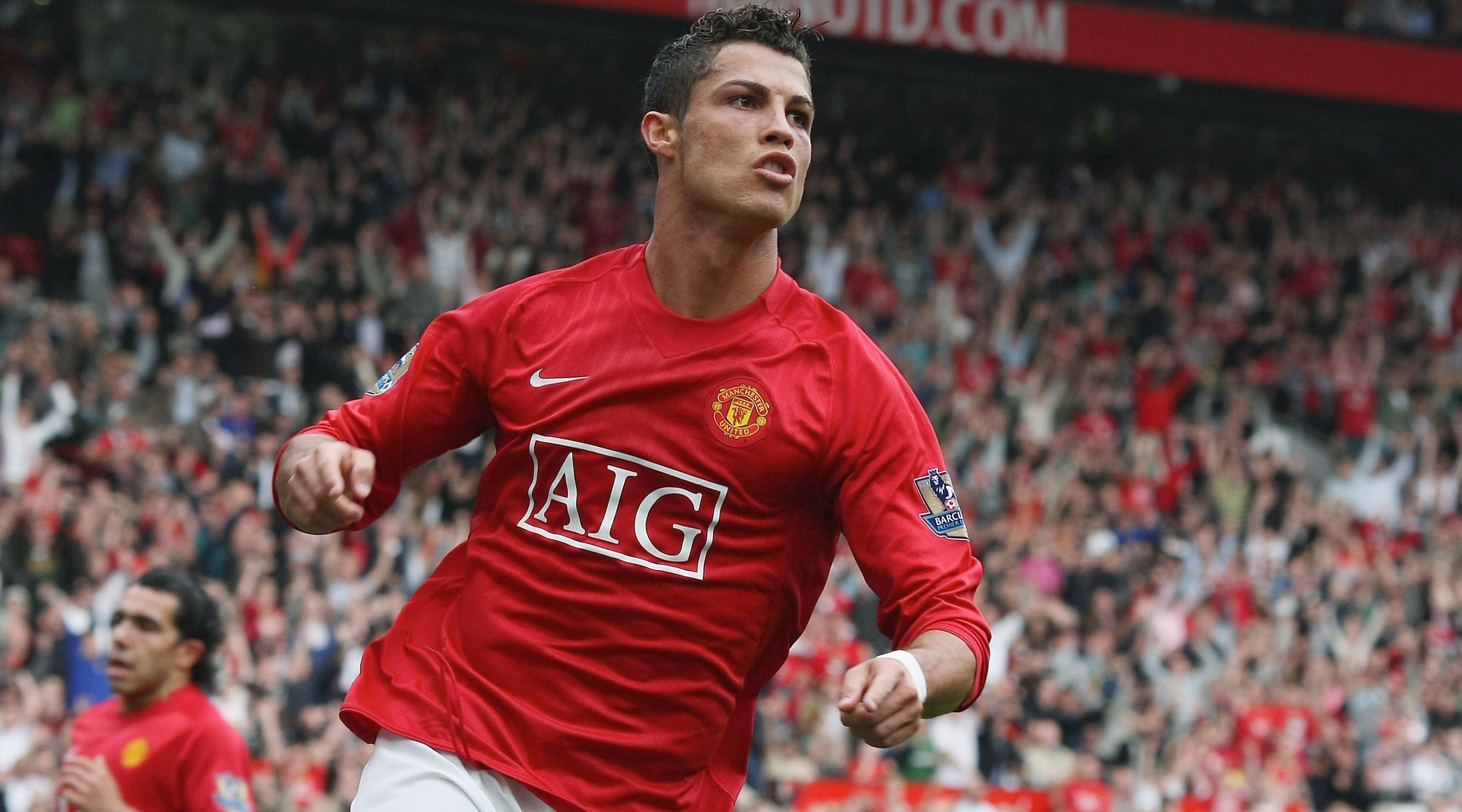
Manchester United
On August 16, 2003, a pair of substitutes made their debuts for Manchester United. The first went on to become one of the greatest players of all time; the second went on to become Eric Djemba-Djemba.
Djemba-Djemba’s Old Trafford career was doomed before he had stepped on the field. Introduced only six minutes after Cristiano Ronaldo, he had already been left with an impossible act to follow.
Manchester United were labouring against Bolton in their league season opener, leading 1-0 after an hour, when Ronaldo replaced Nicky Butt. Aged 18, with blond streaks in his hair that hinted at a certain confidence, the wonderkid had arrived from Portuguese side Sporting for £12.5m days earlier, taking the No.7 shirt vacated by David Beckham. The crowd greeted CR7’s introduction so loudly, and with such elation, that you wondered whether the new boy could possibly match their sky-high expectations. In fact, he more than exceeded them.
Not only did he have the balls, he frequently had the ball in the final half-hour, becoming United’s go-to man as it became obvious how devastatingly effective he could be. “He did about 100 stepovers and earned a penalty,” Kevin Davies later told FFT.
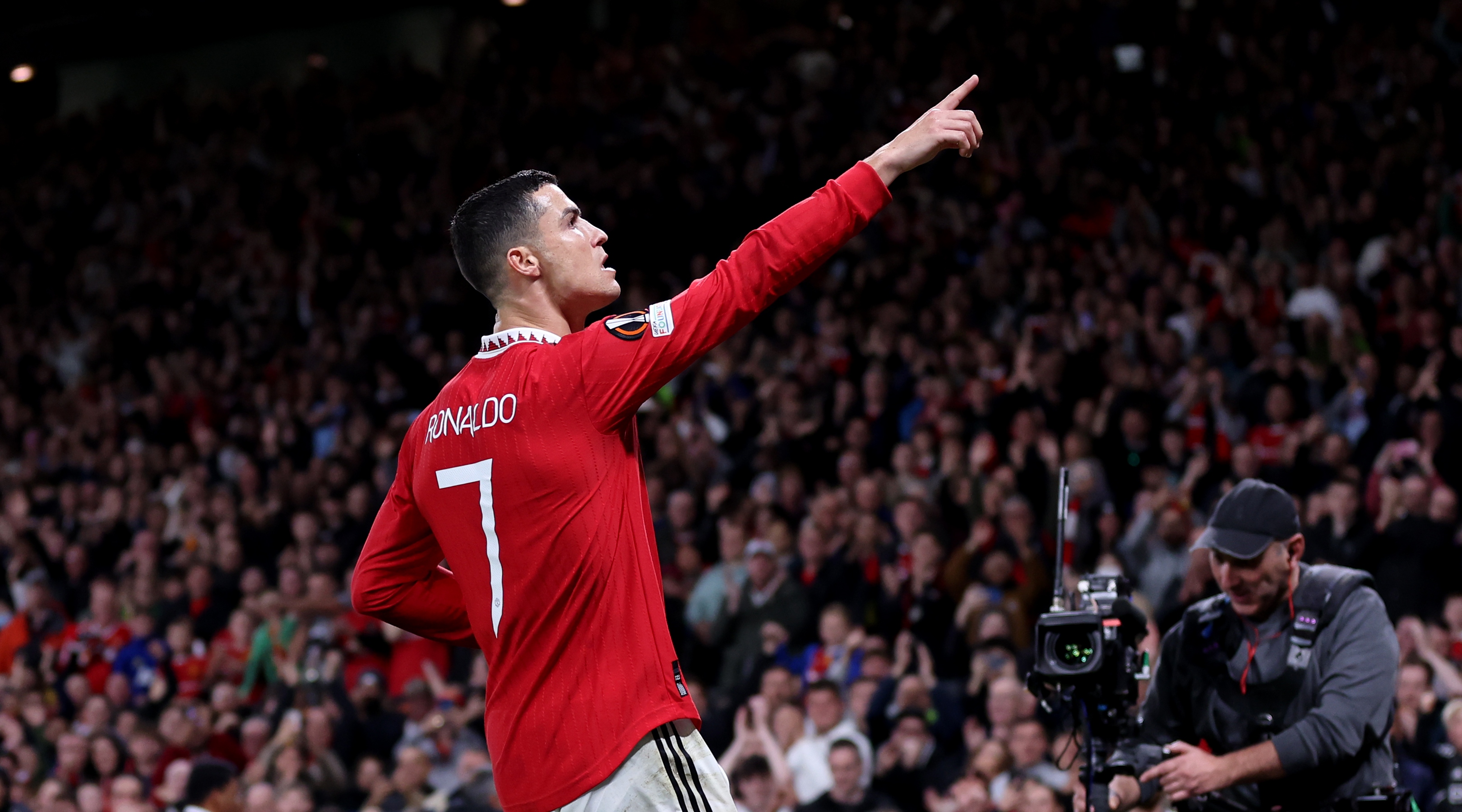
These days, Ronaldo would seize the ball and stick the penalty into the net himself – back then, Ruud van Nistelrooy had spot-kick duties and was denied by Jussi Jaaskelainen. It didn’t matter: Ronaldo soon grabbed hold of possession again and whipped in a cross that eventually led to Ryan Giggs making it 2-0 from close range.
Still the prodigy wasn’t done. “Of his own volition, Ronaldo moved out to the right wing and put two superb crosses in,” continued his gaffer. “The crowd on that side of the ground responded as if a Messiah had materialised before their eyes.”
Ferguson hailed it as “a marvellous debut, almost unbelievable”. “Undoubtedly the most exciting debut performance I’ve ever seen,” was George Best’s assessment, himself an iconic United No.7. By the time Ronaldo left the field at the final whistle, the Old Trafford faithful were chanting his name. For six years, they rarely stopped.
Everyone present that afternoon knew that a star had been born. Only one man has ever been named FIFA World Player of the Year while playing in the Premier League – and it wasn’t Eric Djemba-Djemba.
1. Thierry Henry

Arsenal
In truth, Henry’s hat-trick clincher at home to Liverpool in April 2004 was quite fluky. It was, though, the only moment all afternoon that he wasn’t in abundant control.
Arsenal’s equaliser was a mirror to Henry’s first Highbury league goal against Derby, only less nervously placed – a first-time, left-foot strike. By now, however, such lethal finishing felt like vintage Thierry, rather than an Ian Wright tribute act.
Arsenal trailed 2-1 to the Reds at half-time, their Invincibles status in jeopardy, but Henry seemed to slow down time by the touchline after the break; jogging, his right leg hovering like a magician’s handkerchief over a dove, before passing to Ljungberg who looped Pires in to level proceedings. A minute later, it was all over. Henry picked up the ball by the centre circle, then strode beyond Didi Hamann, bamboozled Jamie Carragher, folded Liverpool inside-out and buried home in the bottom corner. Henry had immense power but made football look weightless.

No one has won the Golden Boot more times. No one assisted more in a season. No one has terrorised defenders with such a combination of bewitching grace and phenomenal power. He was the catalyst in two Premier League titles for Arsenal, carried them on his back during the dark days and lit up English football with his signature swagger.
Thierry Henry isn’t just the King of Highbury or a once-in-a-generation striker though. He represents the artistry with which Arsene Wenger’s greatest sides flourished. He made football fun; it looked classy, effortless and beautiful all in one. He may have left Arsenal in 2007, but Henry at his peak would have thrived in any era, in any team in Premier League history.
Current page: Best Premier League players: 10-1
Prev Page Best Premier League players: 20-11
Conor Pope is the former Online Editor of FourFourTwo, overseeing all digital content. He plays football regularly, and has a large, discerning and ever-growing collection of football shirts from around the world.
He supports Blackburn Rovers and holds a season ticket with south London non-league side Dulwich Hamlet. His main football passions include Tugay, the San Siro and only using a winter ball when it snows.
- Chris FlanaganSenior Staff Writer
- Tim Stillman
- Mark WhiteContent Editor
- Joe Brewin
- Richard Jolly
- Ed McCambridgeStaff Writer
